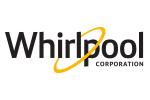CHICAGO — Utility costs, including electricity, gas, water and other essential services, often represent a substantial portion of a self-service laundry’s operating expenses. When inflation occurs, it can drive up the prices of these utilities, affecting the laundromat’s overall financial health.
2022 utilities cost averaged 21.8% as a percentage of gross for the laundry owners who responded to American Coin-Op’s 2022-23 State of the Industry survey released in April. That was up more than two percentage points from the prior year’s results.
Roughly 43% of respondents reported having a utilities cost that exceeded 20%, with one store owner saying their cost individually was 55%.
The specter of rising utility costs should be enough to send any vended laundry owner in search of strategies to help them better manage their utilities usage. But before you decide what strategies to undertake at your store or stores, you must get a sense of what your energy expenses are and what’s contributing to them.
Your local equipment distributor may be able to assist you with this, plus there are companies that specialize in performing assessments of the energy needs and efficiencies of a building, otherwise known as an energy audit.
Self-service laundry owners should check with local, state and regional agencies that help small businesses like theirs to become more energy-efficient. There may be programs available that offer financial assistance in the form of grants and loans for making energy-efficiency upgrades.
For example, Chicago laundry owner Paul Hansen’s collaboration with Peoples Gas Energy proved beneficial to his operation.
RECOGNIZING POTENTIAL FOR SAVINGS
Hansen owns Su Nueva Lavanderia, with five locations in the Chicagoland area. A few years ago, after hearing a presentation by the Peoples Gas Energy Efficiency Program team, he became interested in improving energy efficiency at his stores, according to a case study prepared by the utility provider.
His Western Avenue and Kedzie Avenue locations promised the highest potential for savings, so Peoples Gas scheduled a free energy assessment and began exploring opportunities for customized energy-efficiency solutions.
The Peoples Gas team shared information about available rebates for high-efficiency water heaters and high-speed washers. With water heaters being an affordable upfront investment, Hansen was able to make those upgrades immediately.
The savings from that initial project led him to explore additional energy-saving opportunities, and he replaced his existing washers and installed an ozone laundry system at his 55th Street location. Ozone (O3) is a naturally occurring molecule that helps fabrics by chemically reacting with soils in cold water. Adding the ozone system reduced the amount of chemicals, detergents, and hot water needed to wash linens.
Back at Su Nueva Lavanderia’s Western Avenue location, new commercial dryer retrofits saved money by leveraging new energy-saving technology. The Peoples Gas team also installed free energy-saving products through its Energy Jumpstart offering.
According to Peoples Gas, Hansen’s business received rebates totaling $65,135. Energy savings was calculated at 55,263 therms, for an estimated annual savings of $46,973.
“The process and installation was seamless,” Hansen says. “The success of these initial energy-saving projects and increase in business have led me to consider other opportunities and spread the word on how the program can help other laundromat owners.”
MAY BE TIME TO UPGRADE EQUIPMENT
If several years have passed since you’ve upgraded your laundry equipment, it may be time that you seriously take a look at it.
Utilizing the right mix of new, cutting-edge laundry equipment reduces utility expenses plus offers new profit-generating opportunities. It would certainly involve making a sizable investment, but it may make sense for your operation once you take the costs tied to older, less-efficient equipment into account.
Today’s advanced vended models offer many energy- and resource-saving features. Without focusing on any one brand’s offerings, here are some of the features available in washers and/or dryers on the market:
- Automatic weighing within a washer determines the actual weight of a soiled load and adds precisely the right amount of water, thus lowering water consumption and energy costs.
- High-speed extraction up to 450 G-force removes moisture from every laundry load, cutting drying times and saving on natural gas usage.
- Customized wash programs adjust water level, wash time and rinses per load based on customer need or preference.
- Stronger machine frames and leak detection reduce preventive maintenance and repairs as well as lower utility expenses.
- Dryer sensors determine when laundry is dry and lower the operating temperature or stop a drum altogether.
Check back Thursday for the conclusion!
Have a question or comment? E-mail our editor Bruce Beggs at [email protected].







